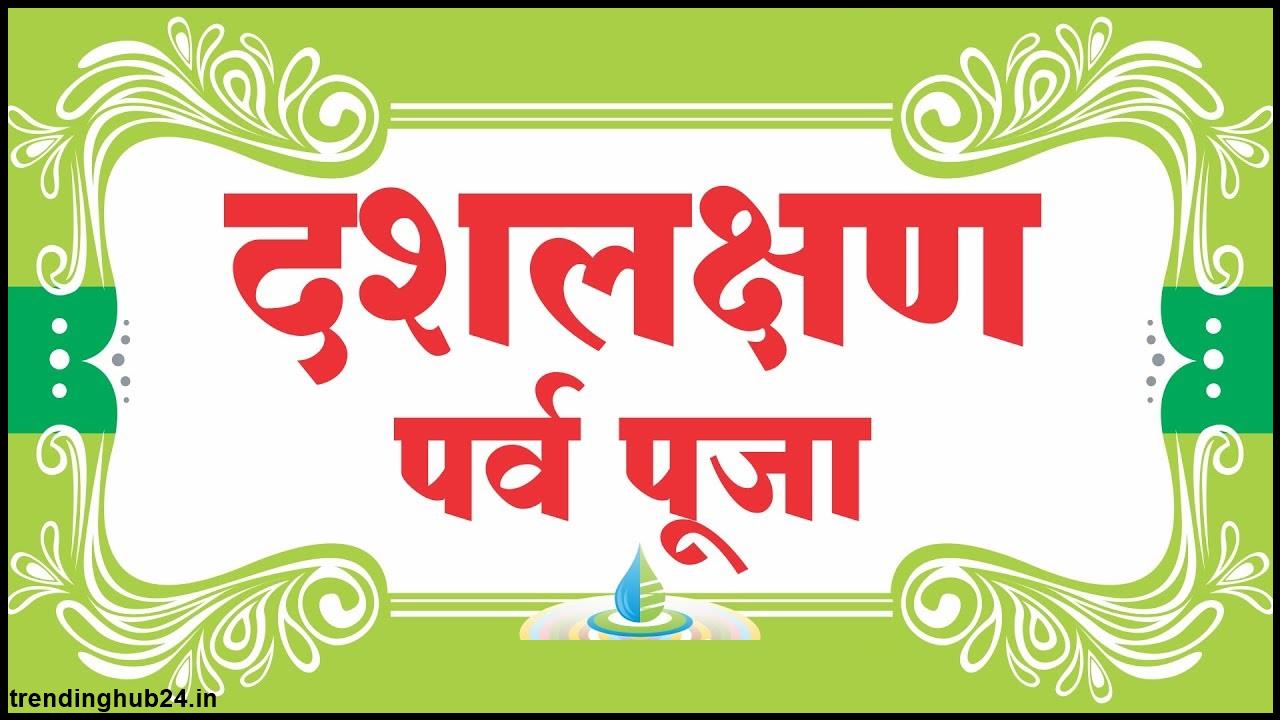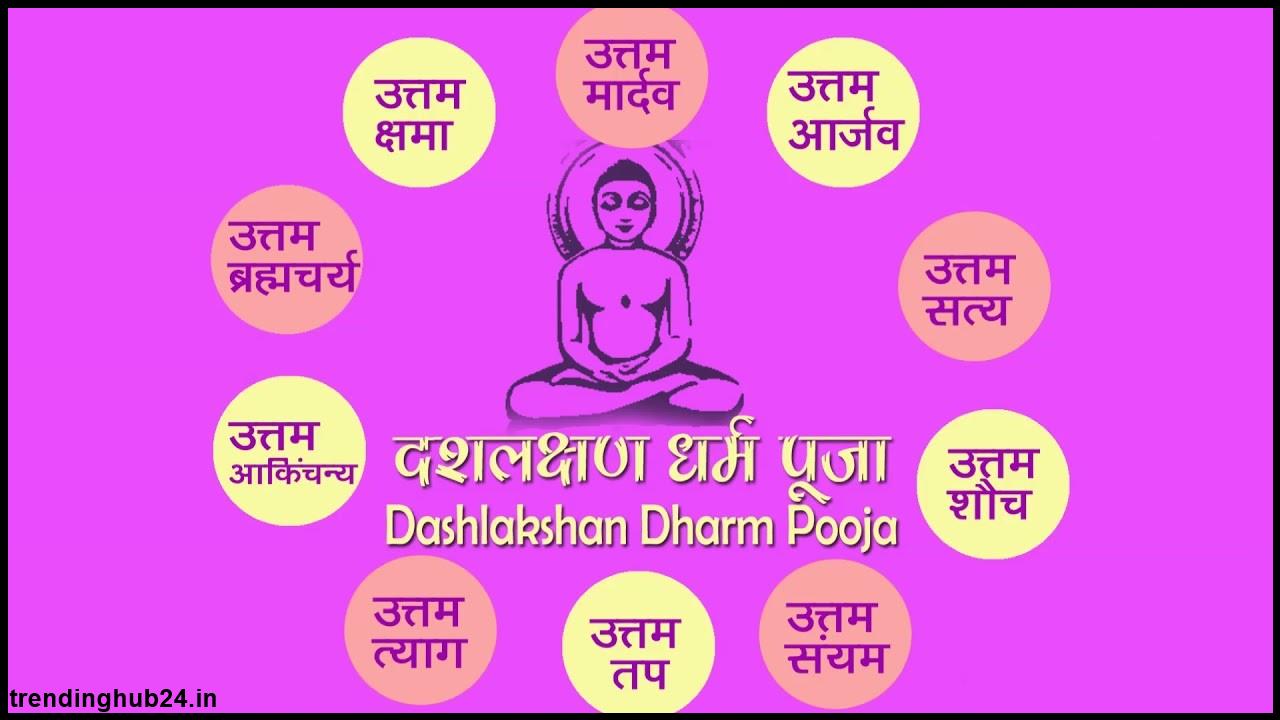🚀 Become a Verified Author on Trending Hub24
✍️ Author Account Available @ $60 / Month | +91 7355993756
Discovering the Spiritual Journey Of Das Lakshan Pooja

Daslakshan Vidhan Pooja is a spiritual journey that guides Jains towards a path of self-purification and ethical living.
Table of Contents
Das Lakshan Pooja: Discovering the Spiritual Journey
Daslakshan Pooja is an esteemed Jain festival. It is a celebration that summarizes the essence of spiritual purity and self-discipline. This festival is celebrated over ten days. Daslakshan Vidhan Pooja is primarily observed by the Digambara sect of Jainism.
It follows the festival of Paryushana, celebrated by the Śvētāmbara sect. This festival provides a profound opportunity for Jains to immerse themselves in the contemplation and practice of ten universal virtues.
These virtues are pivotal to the spiritual and ethical life of a Jain practitioner. These will guide them toward a path of virtue and enlightenment. Here is an in-depth look at the significance, rituals, and virtues associated with Daslakshan Vidhan Pooja.
The Ten Virtues of Daslakshan
As we mentioned above, the Daslakshan Pooja focuses on the ten virtues. The ten virtues celebrated during Daslakshan Vidhan Pooja are:
1. Uttam Kshama (Supreme Forgiveness): This virtue stresses the importance of forgiveness and letting go of anger and resentment.
2. Uttam Mardava (Supreme Humility): Cultivating humility and eliminating pride is central to this virtue.
3. Uttam Arjawa (Supreme Straightforwardness): This virtue encourages honesty and sincerity in thoughts, words, and actions.
4. Uttam Shaucha (Supreme Contentment): It promotes gladness and detachment from material possessions and desires.
5. Uttam Satya (Supreme Truthfulness): Upholding truth in all aspects of life is the focus of this virtue.
6. Uttam Sanyam (Supreme Self-Restraint): Practicing self-discipline and controlling one's senses is central to this virtue.
7. Uttam Tap (Supreme Austerity): Engaging in austerities and self-discipline to purify the soul is the essence of this virtue.
8. Uttam Tyag (Supreme Renunciation): This virtue advocates for the renunciation of selfish desires and attachments.
9. Uttam Akinchanya (Supreme Non-possessiveness): Acceptance of a life of non-attachment and simplicity is the core of this virtue.
10. Uttam Brahmacharya (Supreme Chastity): Maintaining purity in thoughts, words, and deeds and practicing celibacy are highlighted in this virtue.

Significance of Daslakshan Vidhan Pooja
Daslakshan Vidhan Pooja holds immense significance in the Jain community. It is a period of intense spiritual reflection and growth. By focusing on the ten virtues, devotees strive to cleanse their souls of impurities and negative karma.
The festival encourages Jains to live a life of ethical conduct, compassion, and self-discipline. The festival also creates a sense of community and togetherness.
Jains come together in temples and homes to participate in rituals, share meals, and support each other in their spiritual journey. It is a time for families to bond and collectively work towards spiritual betterment.
The celebration of Daslakshan Pooja
During Daslakshan Pooja, it spans ten days, starting on Bhadrapad Panchami. People follow a structured procedure to honor this sacred festival. Here's a step-by-step guide to the observances:
1. Fasting: Throughout the ten-day period, people abstain from consuming food as a form of spiritual discipline and purification.
2. Listening to Pravachanas: Each day of Daslakshan Pooja is dedicated to focusing on one of the Ten Dharmas, or virtues. People gather to listen to Pravachanas, or sermons, that delve into the significance and practice of each virtue.
3. Samayik: As part of their spiritual practice, people engage in Samayik, a period of meditation and mindfulness. During Samayik, people strive to cultivate inner peace and detachment from worldly distractions.
4. Observing Panchami: On the favorable day of Bhadrapad Panchami, the cycle of Utsarpani begins, signaling the end of the Avsarpani period. This transition is significant, as it symbolizes the end of a disaster and the onset of spiritual regeneration.
5. Dhoop Dasam: On Dasvi, or the tenth day of Daslakshan Pooja, people visit temples to perform the ritual of Dhoop Dasam. During this ceremony, incense symbolizes the burning of karmas. It is literally an offering to the divine.
6. Chaturdarshi: The festival concludes on Chaturdarshi, also known as Anant Chaturdarshi, with fasting and Pratikraman. This final day is a time for reflection, repentance, and seeking forgiveness for any transgressions committed during the festival.
7. Ten Dharmas: Throughout Daslakshan Pooja, people strive to express the Ten Dharmas, which are integral to the cessation of incoming karma (Samvar) and the extinction of karmas (Nirjara).
Summing up
Daslakshan Vidhan Pooja is a spiritual journey that guides Jains towards a path of self-purification and ethical living. By practicing the ten virtues, devotees purify their souls and contribute to a harmonious society.
As Jains worldwide celebrate this sacred festival, they confirm their commitment to living a life of virtue and morality, reflecting the timeless wisdom of Jain philosophy.
